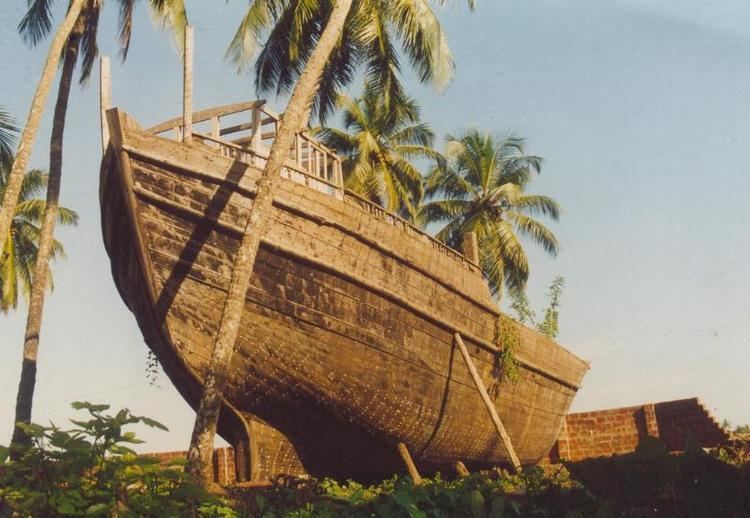 | ||
The Uru, or "Fat Boat", is a generic name for large Dhow-type wooden ships made by vishwabrahmins in Beypore, a village south of Kozhikode, Kerala, in the southwestern coast of India.
Contents
This type of boat has been used by the Arabs since ancient times as trading vessels, and even now, urus are being manufactured and exported to Arab nations from Beypore. These boats used to be built of several types of wood, the main one being teak. The teak was taken from Nilambur forests in earlier times, but now imported Malaysian teak is used. A couple of boat-building yards can still be found near the Beypore port.
History
The art of Uru making in Beypore, on the northern coast of Kerala, is as old as the beginnings of India’s maritime trade with Mesopotamia. Arguably the biggest handicraft in the world, the Uru, as the wooden dhow is called, connects this sleepy town on the outskirts of Kozhikode to the heyday of the spice trade. Loud thuds of craftsmen’s tools on timber from the Uru-crafting yards and rather unassuming sheds greet the visitor to the islands dotting the Chaliyar river which have kept the unique tradition alive for over a millennium. The sound, as well as the tradition, endemic to the region, has survived the onslaught of modernity.
Construction
As an art passed down through generations, Uru-making is an undocumented practice. There are no build plans, sketches, drawings, or blueprints that the makers refer to. From conception to completion, it is all in the mind of the master carpenter or maistry of a yard, who assigns work to his assistants on a daily basis, so as to keep the secrecy that shrouds the technology intact. History channel broadcast a documentary about this on March 6, 2017
What takes you by surprise is the sheer efficacy of the time-tested technique of hull construction, achieved solely using local carpentry tools. Wood, bound together, makes the keel waterproof. This makes the Uru a marvel in handcrafting. The hull and the frame are made in a building yard while fitment of engine and customisation are done elsewhere. On completion, the Uru is launched on the river by Mopla-Khalasis (after the Arabic word for dockyard workers), who employ the age-old pulley-wheel mechanism to roll the boat on a bed of logs to float it out.
